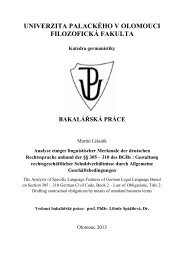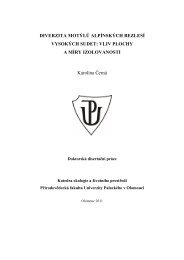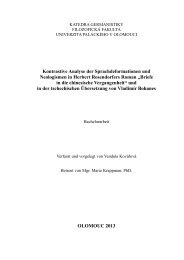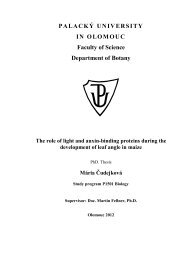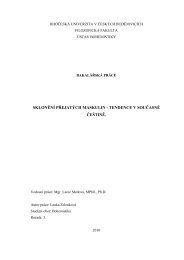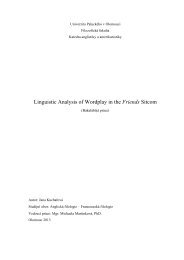You also want an ePaper? Increase the reach of your titles
YUMPU automatically turns print PDFs into web optimized ePapers that Google loves.
L’espressione indica conseguenza: un evento seguirà l’altro» 236 . In altre<br />
parole: «Il termine i[na può significare qui il risultato, piuttosto che il<br />
proposito» 237 . Non si tratta, da parte di Gesù, di un calcolo, ma<br />
semplicemente della coscienza e della sicurezza che dopo la morte seguirà la<br />
risurrezione 238 .<br />
4) evntolh,: Parlando dell’evxousi,a di dare e ricevere di nuovo la vita, Gesù<br />
dice di averla ricevuta come un «comando» dal Padre suo (v. 18). Il<br />
sostantivo evntolh, significa ordine, comando, incarico. Di preferenza indica<br />
il comando di un potente, re o generale o un altro funzionario, però si usa<br />
anche per il comando divino, benché evntolh, non sia un concetto<br />
esplicitamente religioso. Solo nei LXX il termine viene usato come un<br />
termine religioso tecnico (anche se continua ad essere usato anche per un<br />
ordine umano) 239 . Nel NT (67 volte) l’uso del termine è simile a quello dei<br />
LXX: può designare un ordine umano, ma anche i comandamenti della<br />
Legge mosaica.<br />
In Gv evntolh, si trova 10 volte (5 al singolare, 5 al plurale) più 3 volte il<br />
verbo evnte,llomai. «A differenza degli altri scritti neotestamentari, negli<br />
scritti giovannei evntolh, non indica mai i comandamenti della torà<br />
mosaica» 240 , ma si riferisce al comando dato dal Padre a Gesù di portare a<br />
compimento la salvezza 241 . Una volta Giovanni usa il termine evntolai, anche<br />
236<br />
F.J. MOLONEY, The Gospel of John, Minnesota 1998, 311: «The “that” (i[na) should<br />
not be read as stressing the purpose of Jesus’ laying down his life so that he might take it<br />
again. It indicates consequence» (trad. it.: Il Vangelo di Giovanni, 271).<br />
237<br />
C.S. KEENER, The Gospel of John, I, 819: «The term i[na could connote result<br />
rather than purpose here».<br />
238<br />
R.E. BROWN, The Gospel according to John I-XII, 399: «Many commentators have<br />
tried to weaken the telic force of vs. 17, “I lay down my life in order to take it up again”<br />
(e.g., Lagrange, p. 283); they feel uneasy that Jesus would lay down his life with the<br />
calculated purpose of taking it up again. This is a failure to understand that in NT thought<br />
the resurrection is not a circumstance that follows the death of Jesus but the essential<br />
completion of the death of Jesus. In Johannine thought, in particular, the passion, death,<br />
resurrection, and ascension constitute the one, indissoluble salvific action of return to the<br />
Father».<br />
239<br />
Cf. G. SCHRENK, «evnte,llomai, evntolh,», in ThWNT, II, 541-543.<br />
240<br />
M. LIMBECK, «evntolh, entolē Befehl, Gebot, Auftrag», in EWNT, I, 1121: «Im<br />
Unterschied zum übrigen ntl. Schriften bezeichnet evntolh, in den joh Schriften nie die<br />
Gebote der mosaischen Tora».<br />
241<br />
Questa evntolh, significa per Gesù dare e ricevere di nuovo la propria vita (10,18-<br />
19), la stessa evntolh, contiene ciò che Gesù deve dire ed è definita complessivamente<br />
come zwh. aivw,nioj (12,49-50). Osservando le evntolai, del Padre Gesù rimane nel suo<br />
130



